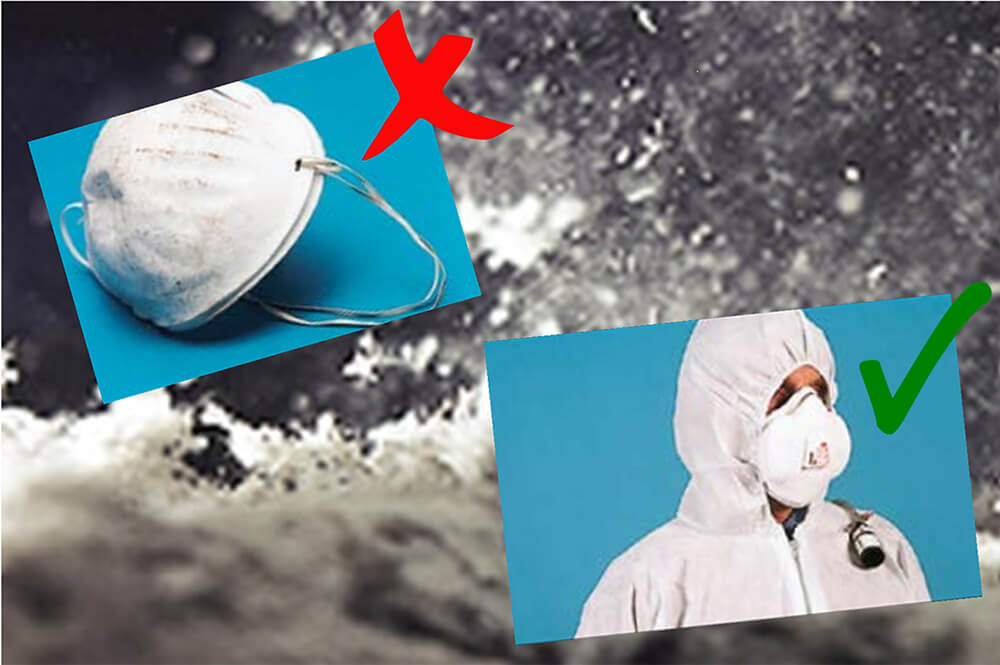
Thirty-five years after the first asbestos ban in the UK, misunderstanding over the prevention of exposure to the lethal fibres continues to this day. Whether disposing of asbestos or involved in an asbestos demolition, much of the confusion surrounds the level of protection required to prevent builders or asbestos waste removal workers from breathing in the tiny fibre particles. Too often, there is a failure to comply with the Control of Asbestos Regulations 2012 or a wilful disregard of even the most basic of safety rules.
It’s now an all too familiar picture seen around the world – the wearing of a face mask in a bid to protect against the spread of Covid-19. Unfortunately, the official medical advice says that unless used in a medical setting (the N-95 type, properly fitted), face masks provide no effective protection against the tiny aerosol droplets of coronavirus. The N-95 mask is made from a material called ‘melt-blown’ fabric – an extremely fine mesh of synthetic, polymer fibres with a diameter of less than one micron forming the inner filtration layer of the mask.
Yet the same lack of knowledge or misinformation has repeatedly seen the wearing of an incorrect face mask by individuals involved in asbestos waste removals.
Table of Contents
Disposing of asbestos: contractors issued with just standard paper masks
It’s also often reported that two basic paper dust masks are worn, one on top of each other, in the mistaken belief that the individual ripping the asbestos boards out by hand in a thick cloud of toxic dust is more protected. Often the same contractors will also not be wearing other essential PPE (personal protective equipment) including the correct overalls, gloves and footwear.
Cases are repeatedly heard in court of contractors issued with just standard paper masks to wear while removing asbestos-containing materials. Despite regular awareness campaigns and training initiatives by the Health and Safety Executive and the professional building industry, far too many men are not the wearing the correct type of RPE (respiratory personal protection) and risk breathing in the toxic fibres.
Asbestos waste removals: 3 types of suitable RPE protection
According to HSE Asbestos Essentials (em6), there are three suitable types of RPE with a UK-assigned protection factor (APF) of 20:
- Disposable respirator to standards EN149 (type FFP3)
- Half mask respirator (to standard EN140) with P3 filter.
- Semi disposable respirator (to EN405) with P3 filter.
FFP stands for Filtering Face Piece, and the FFP 3 is the standard disposable mask approved for use against solid and liquid aerosols, suitable for protection from high toxicity harmful materials in specified concentrations. This includes asbestos materials.
The FFP3 should be suitable for most short duration, non-licensed work for the removal of asbestos. HSE instruct that prior to work proceeding, a check for a correctly fitted mask to the contours of the face should be made in accordance with training and manufacturer’s instructions.
HSE also caution that if spectacles are worn, they should not create a gap between the mask and face. A respirator should never simply dangle around the neck, say during a work break. When the work is completed, the RPE should be removed last and, if disposable, placed with the asbestos waste materials – not simply left “lying around”.